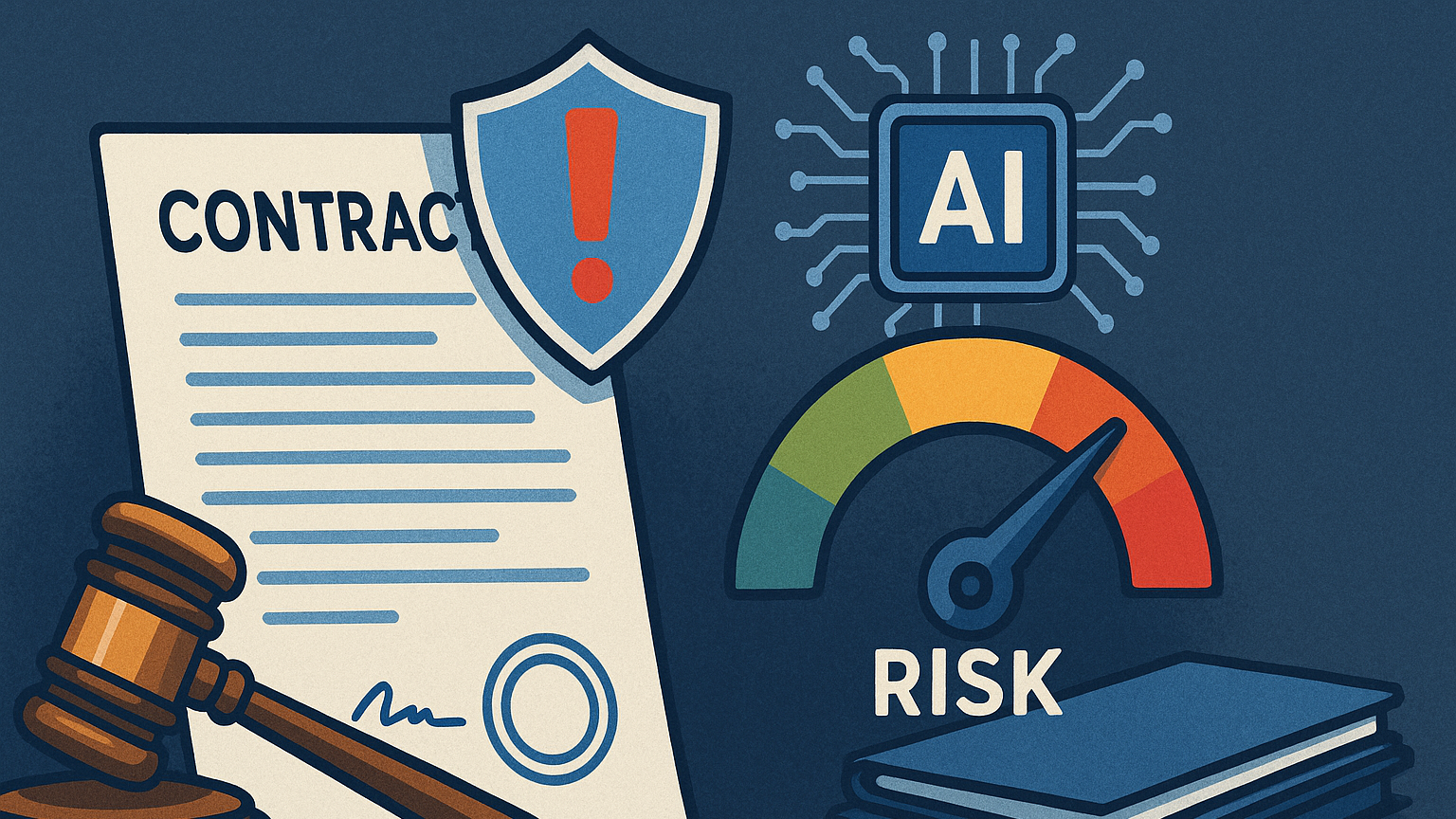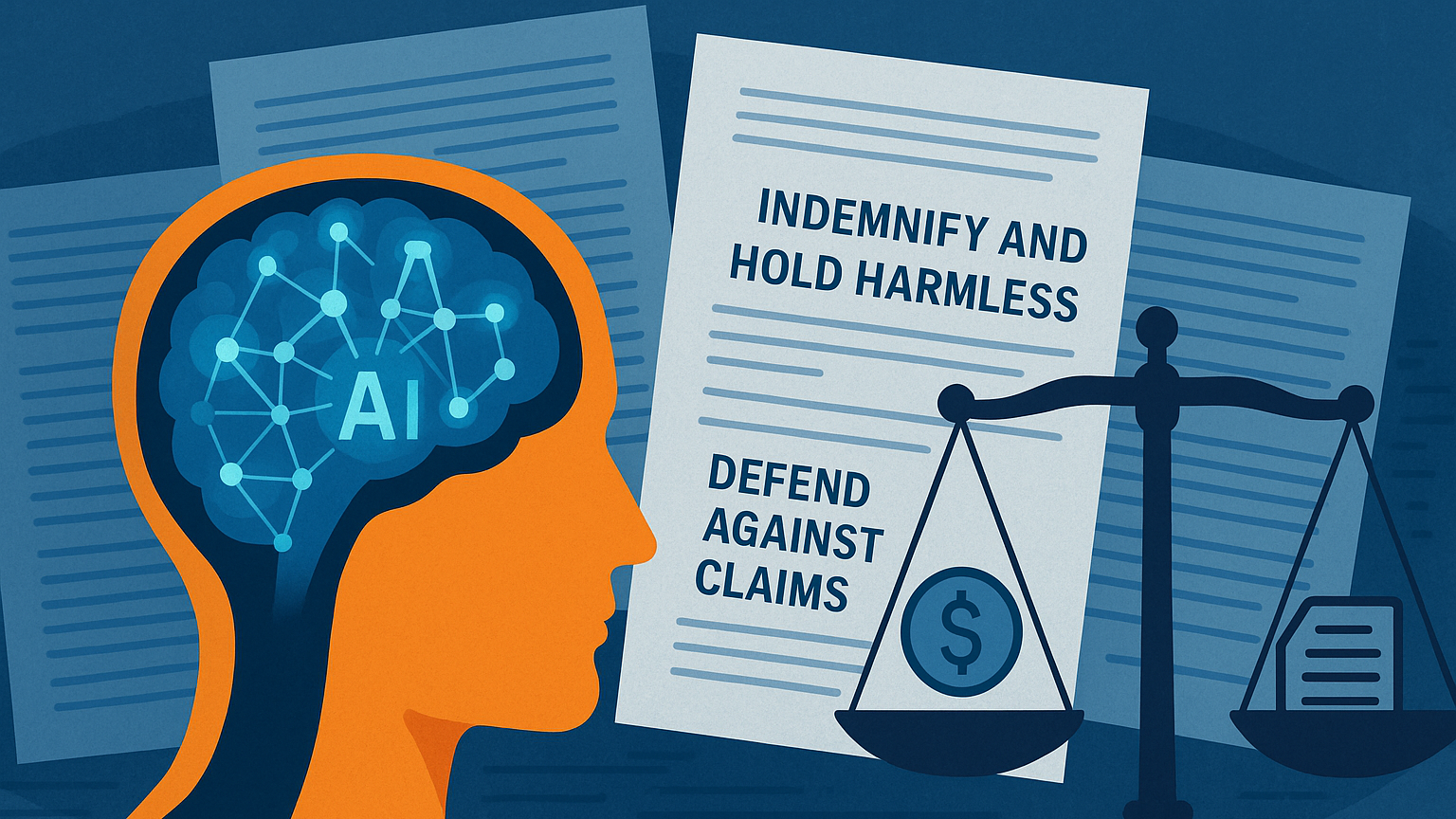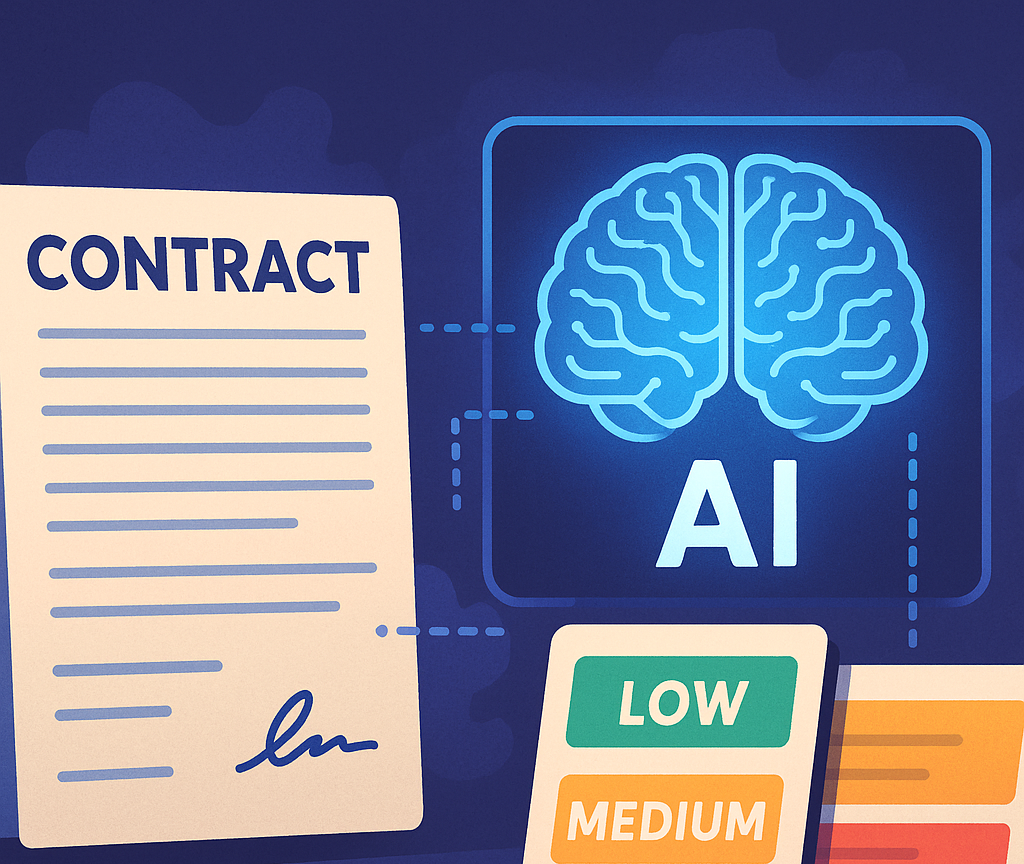
AI in Contract Management for Contract Risk Scoring and Evaluation
You’re working in a world where contracts are the backbone of virtually every commercial interaction, and yet you probably don’t have the time to read every clause, compare every amendment, or quantify every hidden exposure. AI is changing that by giving you tools to systematically score and evaluate contract risk, making the previously manual, inconsistent, and slow process faster, more reliable, and more auditable. In this article you’ll get a practical and friendly guide to how AI works for contract risk scoring, what you need to implement it, how to measure success, and what to watch out for as you adopt these technologies.
Why contract risk scoring matters
You likely handle a portfolio of contracts that varies in complexity and legal exposure, and you need a consistent way to surface the agreements that require attention. Contract risk scoring gives you a single, comparable metric you can use to prioritize reviews, allocate legal resources, and decide which deals require negotiation or escalation. The result is reduced surprise liabilities, fewer missed obligations, and a more strategic approach to managing your contractual footprint.
The business impact of poor contract risk evaluation
When risk evaluation is inconsistent or ad hoc, costs escalate in multiple ways: litigation exposure increases, regulatory breaches can occur, and operational teams miss key SLAs. You might end up with contracts that include unfavorable indemnities, ambiguous renewal terms, or hidden penalties, and you won’t necessarily detect these until it’s too late. By scoring risk consistently, you reduce unpredictable outcomes and align legal review effort with true business risk.
Where AI adds value
AI enables you to analyze thousands of documents quickly and apply consistent rules and learned patterns. Instead of relying solely on tedious manual reviews, AI extracts clauses, highlights deviations from templates, normalizes terminology, and produces a scored output that ranks contracts by risk. You get speed, scale, and reproducibility, plus the ability to feed continuous learning loops so the system improves as your organization gains more experience and data.
How AI evaluates contract risk
Your AI toolkit for risk evaluation combines natural language understanding with statistical learning. It reads contract text, identifies clauses and entities, maps them to risk taxonomies, and uses learned models to predict likelihood and severity of problems. The process is both syntactic (finding relevant words and patterns) and semantic (understanding clause meaning in context), allowing your systems to flag both obvious and nuanced issues.
NLP and semantic understanding
Natural language processing (NLP) lets your system parse sentences, tag parts of speech, and extract named entities like parties, dates, and monetary amounts. Modern transformer-based models add semantic understanding, so the AI can recognize that “indemnify and hold harmless” and “defend against claims” are related concepts even if phrased differently. This semantic layer is critical so you don’t miss risky constructs just because of stylistic differences across authors.

Machine learning and statistical models
Machine learning models take labeled examples—contracts marked as high, medium, or low risk—and learn patterns that correlate with these outcomes. These models can be binary classifiers or regression models that predict a continuous risk score. You’ll typically use supervised learning for risk categories and unsupervised techniques to discover anomalous contracts that don’t fit your existing patterns. Over time, these systems refine their predictions based on feedback and new labeled data.
Hybrid rule-based + AI approaches
You’ll often find the best results come from hybrid systems that combine deterministic business rules with probabilistic AI predictions. Rules capture non-negotiable items (for example: “no assignment without consent”), while AI evaluates nuance, context, and historical patterns. This hybrid approach gives you both the precision of rules for mandatory compliance and the adaptability of AI for ambiguous or novel cases.
Embeddings, similarity search, and knowledge graphs
Embeddings map text into numeric vectors so that semantically similar clauses sit near each other in vector space; this helps you find precedent language, cluster similar risks, and perform semantic search across your contract corpus. Knowledge graphs connect entities and clauses across contracts, enabling you to trace exposure across business units or counterparties. Together these techniques help you move beyond keyword matching to a more interconnected, contextual analysis of contractual risk.


Building a contract risk scoring model
If you’re planning to build or buy a scoring model, you’ll need to think through data, labeling, feature design, and evaluation. The quality and representativeness of your data will determine the model’s utility. You’ll want a phase-by-phase approach: curate a representative dataset, define risk taxonomy, label examples, train models, validate results, and then embed the model into your workflows.
Data requirements and labeling
You’ll need a diverse set of contracts across counterparties, templates, and lifecycle stages so the model learns broad patterns. Manual labeling is essential: legal experts or well-trained reviewers should annotate clauses and assign risk scores to provide ground truth for supervised learning. Consider starting with a smaller, high-quality dataset and expanding iteratively, since a noisy label set will degrade model performance quickly.
Feature engineering for contracts
Features can be simple—presence of specific clause types, monetary values, or renewal terms—or advanced, such as semantic cluster membership from embeddings, negotiation metadata, or counterparty risk indicators pulled from external sources. You’ll want to capture features that reflect both likelihood (how probable is an issue) and impact (what would the consequence be). Combining textual features with metadata gives your model more predictive power.
Defining risk labels and scoring scales
Consistency is critical when defining labels. Decide whether you’ll use ordinal labels (low/medium/high), a continuous 0–100 score, or multiple axis scores (financial risk, compliance risk, operational risk). Clear scoring definitions reduce labeling ambiguity and improve model reliability. Document examples for each label so annotators have practical guidance and the model learns consistent criteria.

Training, validation, and testing
Split your labeled data into training, validation, and test sets in a way that mirrors real-world distribution—don’t overfit to a single contract type or counterparty. Use validation to tune hyperparameters and guard against overfitting, and keep a holdout test set to evaluate final performance. You’ll also want to test on contracts that were not part of the training pool to measure generalizability.
Scoring methodology and explainability
You want a scoring approach that’s both accurate and understandable. Accuracy without explainability leaves your legal and business stakeholders skeptical and reluctant to rely on automated scores. Make explainability central: you’ll need to show why a contract received its score, which clauses contributed, and what actions you recommend.
Scoring algorithms and calibration
Once you have a predictive model, calibrate its outputs so scores reflect real-world probabilities. For example, if a model’s “high risk” label corresponds to a 60% chance of a downstream issue, you should align your thresholds and risk appetite accordingly. Calibration techniques like Platt scaling or isotonic regression help convert raw model outputs into interpretable probabilities.
Explainable AI and user trust
Explainability tools—feature importance, attention maps, or clause-level highlights—help you demonstrate why a contract is risky. Provide users with actionable explanations: highlight offending clauses, show comparable precedent language, and surface suggested mitigations. When people can see the rationale, they’ll trust and adopt the system more readily.
Confidence scores, alerts, and thresholds
Alongside a risk score, surface confidence metrics. Low confidence might trigger a human review, while high confidence and high risk could route directly to escalation. Define thresholds with a cross-functional team so alerts align with legal capacity and business priorities. You’ll want to avoid a “cry wolf” effect by tuning thresholds to balance sensitivity and specificity.

Operationalizing risk scoring in CLM
Scoring is only valuable if it’s integrated into your contract lifecycle and daily workflows. Embed AI into your contract lifecycle management (CLM) platform so scores inform intake, negotiation, renewal, and post-execution monitoring. Seamless integration minimizes friction and ensures the right people see the right insights at the right time.
Integration with contract lifecycle management systems
Your model should connect to the CLM to read drafts, amendments, and executed documents; to write back scores and annotations; and to trigger workflows. APIs, webhooks, and pre-built connectors make integration smoother. Think through versioning so you can track how scores change over time as a contract is negotiated or amended.
Automation and workflow orchestration
Use risk scores to automate triage: high-risk contracts go to senior counsel, moderate-risk contracts to a specialist, and low-risk contracts to automated approval pathways. Automation reduces review bottlenecks and speeds up deal cycles while ensuring human oversight where it matters. Design workflows to allow reviewers to override scores and feed those decisions back into model retraining.
User interface and human-in-the-loop review
Make the AI’s outputs understandable inside the interface you use every day. Present clause highlights, recommended redlines, and links to precedent language. Keep humans in the loop: reviewers should be able to accept, modify, or reject AI suggestions and annotate why. This human feedback is essential for continuous improvement and for building institutional trust.
Governance, compliance, and security
You’ll be dealing with sensitive commercial and personal data, so governance and security aren’t optional. Establish clear ownership of models and data, implement access controls, and ensure the system maintains audit trails that you can present to regulators or internal auditors.
Data governance and provenance
Track where training and production data came from, how labels were created, and when models were updated. Data provenance builds institutional memory and helps you investigate model behavior. Set policies for data retention, anonymization, and permissible use so you stay compliant with internal controls and external regulations.
Regulatory and legal considerations
Depending on your industry and jurisdiction, automated risk assessments may have legal implications—especially when they affect consumer contracts, regulated financial products, or healthcare agreements. Ensure legal oversight of model outputs, and be ready to demonstrate how decisions are made. In some cases, you may need to keep humans in decision loops to satisfy regulatory requirements.
Security, privacy, and access controls
Secure your contract repository and model outputs at rest and in transit. Apply role-based access controls so only authorized personnel see specific contract details or risk assessments. If you use third-party vendors, validate their security posture and data handling practices, and make sure contracts with vendors protect your data and intellectual property.
Sector-specific examples
Different industries have different risk profiles, regulatory constraints, and contractual norms. Tailor your approach to your sector so the model learns relevant patterns and your workflows reflect actual business needs.
Financial services
In finance you’ll focus on counterparty credit risk, regulatory compliance, and operational continuity. Your models should flag problematic indemnities, unclear collateral terms, and clauses that can trigger liquidity events. You’ll also need rigorous audit trails and strong governance to satisfy regulators and internal risk committees.
Healthcare and life sciences
You face privacy regulations (like HIPAA) and compliance obligations involving patient safety and data handling. Risk scoring should prioritize clauses that touch on data sharing, clinical trial obligations, and vendor responsibilities for sensitive information, supporting both legal and clinical stakeholders in managing exposure.
Technology and software
For tech contracts you’ll want to emphasize IP ownership, licensing scope, service level agreements (SLAs), and indemnities tied to open-source components or data breaches. Embeddings and similarity search help you detect uncommon licensing language that could expose you to patent or copyright issues.
Manufacturing, energy, and supply chain
Your main risks are operational continuity, force majeure, delivery terms, and price escalation clauses. AI can help spot unfavorable payment terms, one-sided pass-through liabilities, or ambiguous delivery responsibilities that could disrupt production lines. Supply chain visibility combined with contract scoring helps prioritize vendor remediation.
Measuring success and ROI
You’ll need to justify investment by measuring tangible improvements: faster review times, fewer escalations, better negotiation outcomes, and decreased legal spend. Define metrics up front and tie them to business outcomes so stakeholders can see the value.
Key performance indicators
Track review turnaround time, percentage of contracts flagged as high risk, time saved per review, reduction in escalations, and post-execution issues traced back to contract clauses. These KPIs demonstrate both efficiency gains and risk mitigation benefits, helping you make the case for broader adoption.
- Review turnaround time reduction
- Percentage of contracts requiring senior counsel intervention
- Downstream incidents attributable to contract language
Model monitoring and drift detection
Monitor model performance over time by tracking label distributions, false positive/negative rates, and user override rates. Concept drift—shifts in writing style, contract types, or legal norms—can degrade performance, so put alerts and retraining plans in place. Maintain dashboards to surface when the model needs attention.
Continuous improvement and retraining
You’ll collect feedback as reviewers accept or reject AI suggestions; use that labeled feedback to retrain your models periodically. Continuous improvement cycles ensure the AI adapts to new templates, negotiation behaviors, and regulatory changes, and they keep performance aligned with evolving business needs.
Implementation roadmap and best practices
A phased implementation minimizes risk and accelerates value. Start small, build credibility with a pilot, then scale across contract types and geographies as you demonstrate benefit. Along the way, focus on governance, stakeholder engagement, and measurable outcomes.
Proof of concept and pilot design
Design a pilot that targets a high-volume, high-impact contract class. Measure baseline performance, run the AI in parallel with human reviewers, and compare outcomes. Use the pilot to refine labels, validate scoring thresholds, and build a case study you can present to leadership for broader rollout.
Change management and adoption
Adoption isn’t just technical; it’s cultural. Train your legal and business users on how to interpret scores, how to provide feedback, and how to override the system when needed. Share success stories and quick wins to build momentum, and maintain channels for ongoing user input.
Choosing vendors or building in-house
Decide whether you’ll buy a commercial solution, extend an existing CLM vendor, or build an in-house capability. Vendors accelerate time-to-value and often provide templates and integrations; building gives you maximum control and customization. Consider total cost of ownership, data residency needs, and your internal talent before choosing a path.
Common pitfalls and how to avoid them
You’ll want to avoid traps that commonly derail AI projects: poor data quality, unrealistic expectations, and lack of governance. Anticipate these issues and set mitigation strategies so your project delivers predictable value.
Data quality and bias
If your training dataset is skewed—over-representing certain contract types, counterparties, or legal teams—your model’s judgments will be biased. Invest in diverse, representative data and implement review procedures to catch systematic errors. Bias can lead to inconsistent treatment of counterparties and undermine trust.
Overreliance on automation
AI is a powerful assistant, not a replacement for judgment. Don’t automate away essential human checks, especially in high-stakes contracts. Keep a human-in-the-loop for ambiguous or high-impact decisions and make sure override actions feed back into the model for learning.
Insufficient validation and audit trails
Without proper validation and logs, you can’t explain why the AI made a particular assessment. Build audit trails that capture inputs, model versions, and reviewer overrides so you can reconstruct decisions for compliance, legal challenges, or continuous improvement.
Future trends in AI-driven contract risk evaluation
The field is evolving rapidly, and keeping an eye on future trends helps you plan for next-generation capabilities. Expect advances in generative models, real-time scoring, and cross-enterprise risk collaboration to reshape how you think about contractual risk.
Generative AI and synthetic contract augmentation
Generative models let you synthesize realistic contract variations for training, produce suggested redlines, and draft mitigation language automatically. Use synthetic data to bootstrap models where labeled examples are scarce, and use generation to propose negotiation language that’s consistent with your risk appetite.
Real-time and contextual risk scoring
Contracts will increasingly be scored in real time as drafts are edited, supporting live negotiation guidance and risk-aware authoring. Contextual scoring that factors in deal economics, counterparty health, and external events (like sanctions or supply chain disruptions) will give you more nuanced, actionable insights.
Cross-enterprise risk ecosystems
Expect ecosystems where counterparties share standardized risk signals, allowing you to trace exposure across partner networks while preserving confidentiality through federated learning or differential privacy. This collaboration will let you identify systemic risks that no single organization could detect alone.
Conclusion
You’re in a position to make contract review faster, more consistent, and more strategic by adopting AI-driven risk scoring. Start with a clear problem statement, build governance and data practices, and design workflows that keep humans in the loop while automating routine triage. With thoughtful implementation you’ll reduce surprises, optimize legal effort, and turn contract data into actionable insight that protects and empowers your business.
